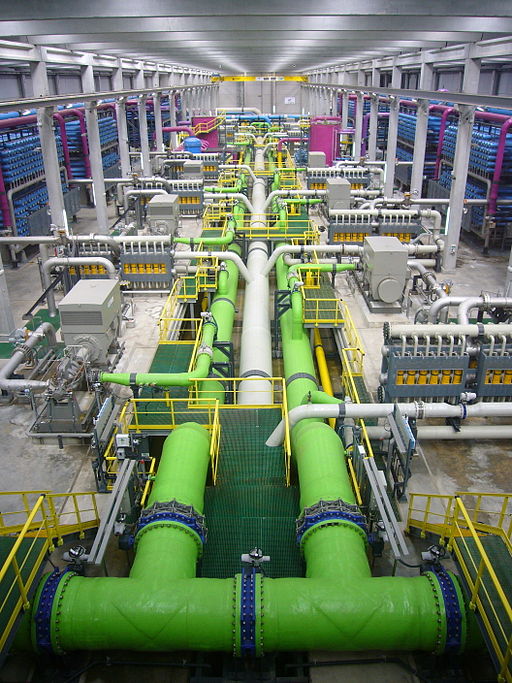
California Dept of Water’s website tries to answer a question on a lot of people’s minds right now: Are we in a drought?
Several recent developments have gotten me thinking about water use in California — recent water shortages and the conversations about building desalination plants. Water scarcity will be a growing problem this century, mostly due to the world’s growing population. Drought-prone California’s plans to desalinate seawater is likely to have unintended consequences in the form of increased greenhouse gas emissions.
But our water use goes beyond the local water in our reservoirs and snowpacks. Products we import also have water costs that we don’t often think about and they add to our total “water footprint.” Our global economy means California’s water resources are intertwined with water resources around the world.
Locally, the picture isn’t pretty. The April reports on current water levels in California note that the first three months of 2013 have been the driest since 1920. A drought hasn’t been declared, but water officials have cut promised allocations to southern and central California water districts.
Earlier this month, a report by the Pacific Institute on desalination plants highlighted that energy costs might outweigh the benefits. Fifteen facilities are planned up and down the California coast with two more in Mexico. Later this month, a much-delayed environmental impact report will be released on Santa Cruz’s own planned desal facility.
The planned facilities might alleviate the pressure on the state’s other water sources, but they’ll require huge amounts of electricity to desalinate seawater, despite recent improvements to the technology. Although some of that electricity can come from sustainable sources like wind and solar, not all of it will. Running the plant will indirectly mean more carbon emissions that will add to the warming climate. Like many other environmental dilemmas, any solution to California’s water shortage comes with a cost.
We can try to conserve water in our daily lives, but only four percent of California’s water footprint comes from household usage. According to an earlier report by the Pacific Institute, California’s water footprint is 20 trillion gallons per year – double what flows through the California’s two largest rivers, the San Joaquin and Sacramento. More than 90 percent of that footprint comes from agricultural use. That includes not only the food grown and eaten here, but also food grown here and exported, as well as food grown elsewhere and shipped to California. Producing meat and dairy has the highest cost, as is widely reported. But my beloved morning coffee is also terribly water-wasteful. It takes 35 gallons of water for a typical cup of coffee, enough to fill more than half my bathtub. (Curious about your own water use? Check out National Geographic’s water footprint calculator).
As the report notes, “California’s economic and social well-being is intimately connected with water resources beyond our borders.” At first glance, water resource issues are more constrained than, say, the amount of greenhouse gases released into the atmosphere. But both problems need solutions that cross borders. Other countries with the funds may contemplate desalination as a solution for water shortages, as California is doing. But as the recent report makes clear, we’ll pay in other ways, with more greenhouse gas emissions.
There are ways to curb our water-extravagant ways that are more carbon neutral — and often cheaper, too — like recycling waste water or capturing rainwater runoff. We may also find other creative solutions that we can’t anticipate yet. But the trick will be to balance the monetary and environmental costs with a growing population that needs more and more water every day.
